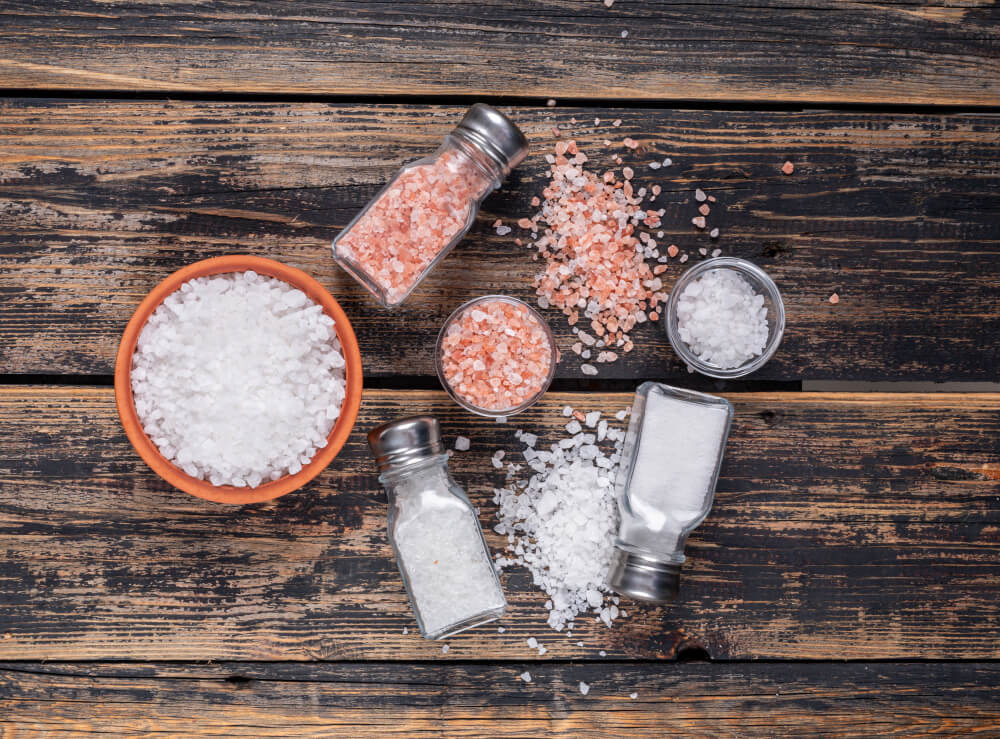In the market, you can find different types of salt, such as table salt (kitchen salt) or sea salt. Each salt has a different texture and mineral content. So, what is the difference between the two, and which one is good for daily consumption?
Differences between sea salt and table salt
Salt is a mineral that contains natrium and chlorine (NaCl), both minerals needed for a healthy body. Many people think that sea salt has better nutritional content than table salt, so sea salt is considered healthier. Although the taste of the two does not have a significant difference, sea salt and table salt actually have some differences, including:
Differences in the manufacturing process
Sea salt comes from the evaporation of seawater, making sea salt a natural source of sodium. Table salt, on the other hand, comes from seawater mining. After the seawater evaporates and produces salt, the salt is then taken to a factory to be reprocessed into fine crystals that are easily mixed with food.
Difference in texture
If you observe, table salt has a finer texture than table salt. Sea salt is generally not reprocessed, so it has a coarser and drier texture than table salt. Some cooks choose to use sea salt because it has a crunchier texture.
Differences in mineral content
Although many people think that sea salt is healthier, it actually has the same nutritional content as table salt. Both table salt and sea salt contain about 40% sodium by weight. Some types of sea salt have larger crystals than table salt, so there is usually less sodium in a spoonful of sea salt compared to a spoonful of table salt due to the difference in crystal size.
According to WebMD, one teaspoon of table salt contains 2,360 mg of sodium, while one teaspoon of sea salt contains 2,000 mg of sodium. Sea salt comes from natural sources and contains other minerals, including:
- Magnesium
- Calcium
- Potassium
Table salt does not have this additional nutrient, but fortified salt contains iodine, which aids the body's metabolism.
Differences in taste
In addition to differences in texture and mineral content, sea salt generally has a stronger flavor than table salt. For this reason, cooks usually use sea salt because it gives a stronger salty taste even though it uses a smaller amount when compared to table salt.
Benefits of sea salt and table salt
Table salt contains iodine, which is required for the production of thyroid hormones. The human body cannot produce iodine on its own, so it must be obtained through food. If you don't get enough iodine, your body won't produce enough thyroid hormones, which causes an enlarged thyroid (goiter).
Sea salt can be used as a cooking ingredient or as part of a warm bath to relieve eczema. Furthermore, sea salt with high magnesium levels can help improve hydration and reduce skin roughness in people with dry skin.
There is no significant difference in terms of health between the two. What must be considered when consuming salt, both table salt and sea salt is the amount consumed per day. Excess salt consumption can result in a variety of health issues, including hypertension, heart disease, stroke, and heart attack. You should not consume more than 1,500 mg of salt per day, or about 1 teaspoon per day.
Both table salt and sea salt provide nutrients that the body needs. It is best to limit salt consumption to reduce the risk of hypertension and heart disease.
If you need medical advice or consultation, you can either visit a doctor or make use of the consultation features that are available in the Ai Care application by downloading the Ai Care application from the App Store or Play Store.
Looking for more information about nutrition, food, and other diet tips? Click here!
- Sean Edbert Lim, MBBS
Streit, L. (2019). Sea Salt: Uses, Benefits, and Downsides. Available from: https://www.healthline.com/nutrition/sea-salt-benefits
Sharma, A. (2021). What's the Difference Between Sea Salt and Table Salt. Available from: https://www.webmd.com/food-recipes/difference-between-sea-salt-and-table-salt
Caporuscio, J. (2019). What is the difference between sea salt and table salt?. Available from: https://www.medicalnewstoday.com/articles/326519
WebMD Editorial Contributors. What Is Iodized Salt?. Available from: https://www.webmd.com/diet/what-is-iodized-salt
Mayo Clinic. What's the difference between sea salt and table salt?. Available from: https://www.mayoclinic.org/healthy-lifestyle/nutrition-and-healthy-eating/expert-answers/sea-salt/faq-20058512











